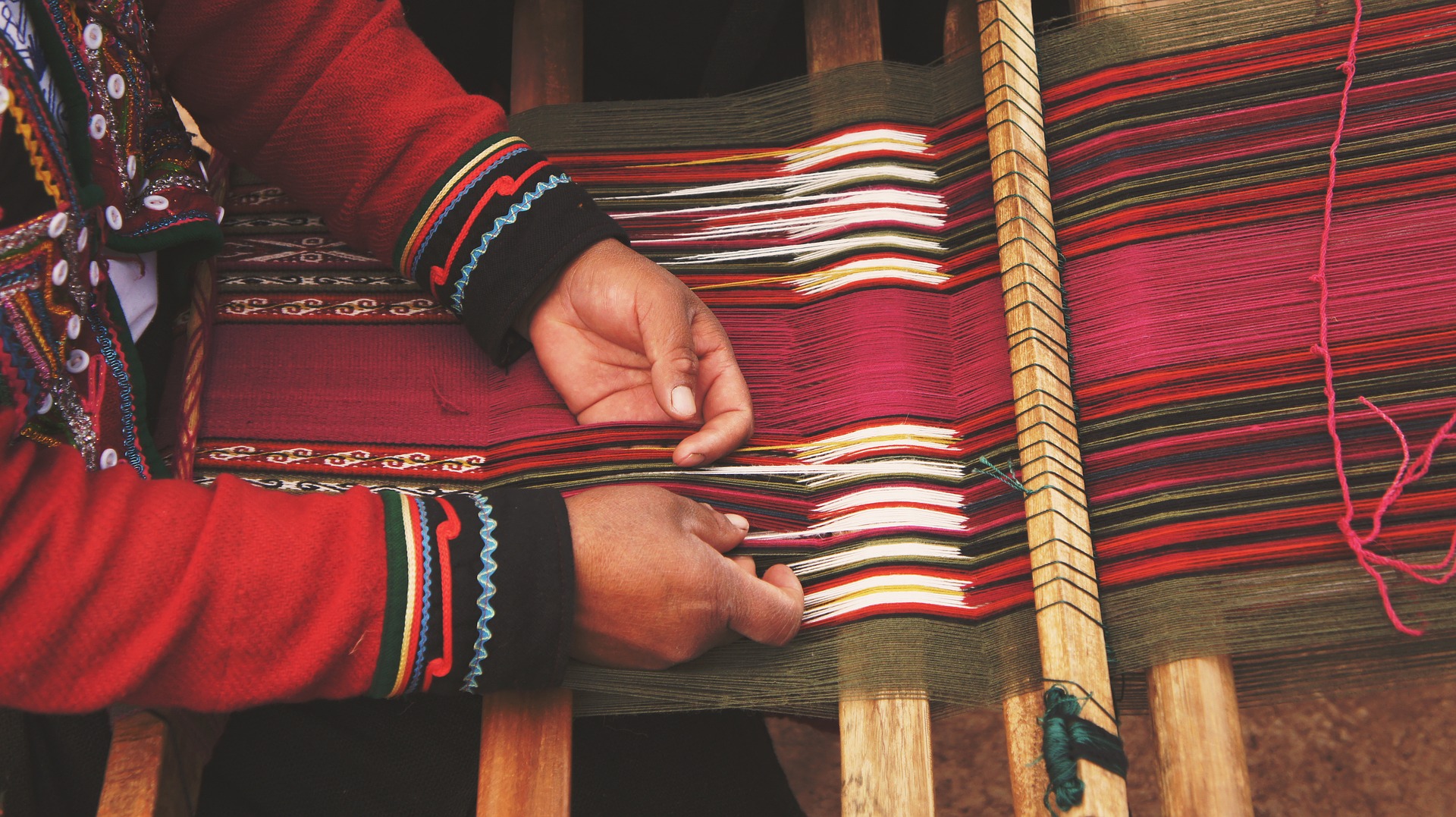Enculturation
 A significant part of the development of our personal identity is the learning and maintenance of the behaviours and norms of our own culture. This is a process called enculturation.
A significant part of the development of our personal identity is the learning and maintenance of the behaviours and norms of our own culture. This is a process called enculturation.
Babies are not born with a “culture.” They develop an understanding of the values, language, and expectations of the culture through interacting with gatekeepers – for example, parents, the media, and school. They also develop a culture through interaction with their peers. Enculturation is not complete when you are five, thirteen, or even fifty years old. It is a constant process that reinforces your identity as a member of your culture.
When we discuss the effect of enculturation on behaviour, we are talking about musical preference, participation in community rituals, language use, food choice, and decisions about how to spend one’s free time. When we discuss the effect of enculturation on cognition, we are referring to attitudes about social relationships, gender roles, time orientation, beliefs about health and illness, and beliefs about morality. This is also referred to as values enculturation.
Enculturation can occur through direct tuition – that is, your parents tell you what you are supposed to do. In addition, as we have discussed earlier in this unit, Social Cognitive Theory – or observational learning – plays a key part in this development. Finally, what psychologists call participatory learning is also important. In this type of learning, children engage in an activity and then transfer that learning to later situations.
Research in psychology: Odden & Rochat (2004)
 Odden and Rochat studied the role of Social Cognitive Learning Theory – or observational learning – on the development of cultural norms in Samoa. In particular, they looked at the behaviour of line fishing and conceptual understanding of rank and hierarchy. The researchers carried out a longitudinal study of 25 months on 28 children in a single Samoan village.
Odden and Rochat studied the role of Social Cognitive Learning Theory – or observational learning – on the development of cultural norms in Samoa. In particular, they looked at the behaviour of line fishing and conceptual understanding of rank and hierarchy. The researchers carried out a longitudinal study of 25 months on 28 children in a single Samoan village.
Samoan culture is very hierarchical – it has a very high power distance index. This includes the rank of a parent and a child. Social norms limit the amount of time spent between adults and children. Parents have a largely non-interventionist approach to their children and their learning. Samoan children are largely left to learn things on their own without adults attempting to motivate or organize their learning.
As fishing lines, spears and nets are limited, children do not participate in fishing with adults. Through both interviews and observations, the researchers noted that young males spend a lot of time watching adult males fish, but there is no direct instruction. They found that children of around 10 years old would borrow the adult’s fishing equipment and experiment on their own without any adult supervision. By age 12, most children were able to fish on their own.
It appears that this is also how they learn the social rules regarding how to behave with people of higher rank – and how the chief system works on the island. There is no direct instruction about the system until high school, but children observe parents and overhear their conversations about the system. The researchers gave a multiple-choice test of basic knowledge about the chief system to 46 twelve-year-olds and found that the majority of the children had a broad understanding of the concepts and the rituals of their society.
It appears that the cultural norms are not taught directly, but rather learned through the active observation by the children of the adults in the community.
ATL: Thinking critically about research
 Read the key study by Greenfield (2006).
Read the key study by Greenfield (2006).
How is this study different from the study above?
Which study do you think is a better study of enculturation? Be able to justify your response.
How is this study different from the study above?
The Greenfield study focused on a single skill over a longer period of time. In both cases, observations and interviews were used. However, the observations in the Greenfield study were participant observers where the researcher was also part of the weaving of fabric. In addition, the cultures were very different. In the Samoan study, the parents were not directly involved in the teaching of their children; in the Mayan culture, they play an important role in teaching cultural skills.
Which study do you think is a better study of enculturation? Be able to justify your response.
Answers will vary. The length of the study and the fact that more than one generation was studied, make the data richer in the Greenfield study. However, there was greater data triangulation in the Samoan study - looking at more than one behaviour and interviewing not just the parents, but teachers and the children.
Enculturation and gender
 One of the key behaviours that is enculturated is gender roles. A gender role, also known as a sex role, is a social role encompassing a range of behaviors and attitudes that are generally considered acceptable, appropriate, or desirable for people based on their biological or perceived sex.
One of the key behaviours that is enculturated is gender roles. A gender role, also known as a sex role, is a social role encompassing a range of behaviors and attitudes that are generally considered acceptable, appropriate, or desirable for people based on their biological or perceived sex.
Fagot (1978) carried out a series of naturalistic observations of parent/child interactions. Toddlers and their parents were observed in their homes using an observation checklist. The researchers wanted to examine the parental reaction when the behaviour of the child was not "gender appropriate."
It was found that parents reacted significantly more favorably to the child when the child was engaged in gender-appropriate behavior and was more likely to give negative responses to "gender inappropriate" behaviors. Fagot and her team followed up by interviewing the parents. The parents' perceptions of their interactions with their children did not correlate with what was observed by the researchers, indicating that this is not a conscious behaviour.
Smith and Lloyd (1978) wanted to see how gender labeling would affect toy choice for children. In their study, the sample was made up of new mothers. They were asked to play with a 6-month old baby. Even though the mothers did not know it, the baby that they were playing with was cross-dressed. This means that if it was a boy, it was dressed as a girl and had a girl’s name. If it was a girl, it was dressed as a boy and had a boy’s name. The mother and the child were put into a room that had a collection of “gendered” toys – like a football (male) and stuffed animals (female). The interactions between the woman and the child were filmed. The researchers found in their observation that the mothers chose toys that matched their perception of the gender of the child. They also were more active with the child when they thought it was a boy.
This study shows that the way that parents interact with a child may play a role in enculturation, teaching the child what is appropriate behaviour in their culture. In this case, which toys they should play with and the accepted level of physical activity.
For more on the enculturation of gender, see the sociocultural arguments for gender identity in the development unit.
A strength of the social cognitive theory is that it takes into account the social and cultural context in which enculturation occurs. It predicts that children acquire internal standards for behaviour through reward and punishment - either by personal or vicarious experience. A number of empirical studies support the notion of modeling.
One weakness of the social cognitive theory is that it cannot explain why there seems to be considerable variation in the degree to which children conform to a culture's norms - for example, the level to which individual boys and girls conform to gender role stereotypes. Social cognitive theory does not explain the nonconformists.
Another limitation is that when discussing enculturation, there are too many variables that may play a role that is not possible to limit the explanation simply to modeling of behaviour. For example, since the majority of caregivers are still women, boys and girls have a very similar experience in their development. SLT does not account for this. Based on SCT's argument, children's gender identity should overall be more feminine. This shows the importance of peers and other socializing factors.

 IB Docs (2) Team
IB Docs (2) Team
